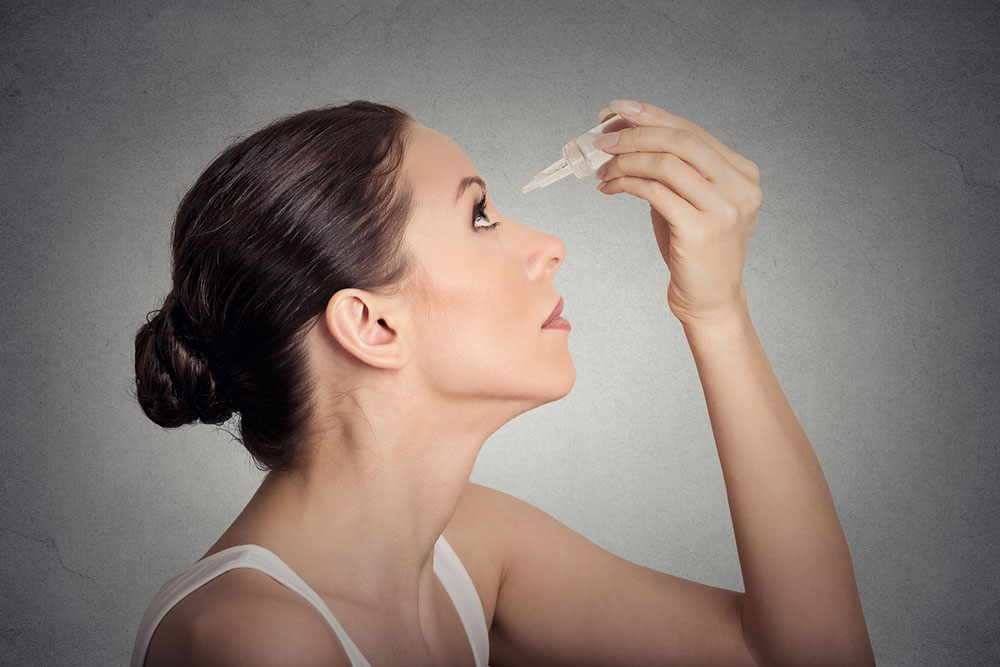Best Eye Drops in the Market for Pink Eye
Pink eye or conjunctivitis is probably the most common infection to affect the eyes. This condition can affect children, men, and women of all ages. It is highly contagious but also easily treatable. Before we get into the best eye drops for pink eye, it is necessary to understand the condition and the factors that cause it.
What is pink eye?
Pink eye refers to the inflammation of the conjunctiva or the thin layer that covers the inside of the eyelids and the white of the eyes.

When people speak of pink eye, they usually mean viral conjunctivitis. However, several factors may cause pink eye. Hence, the eye drops that one will use to treat pink eye will also vary.
Viral conjunctivitis is highly contagious and usually clears up on its own. On the other hand, bacterial conjunctivitis can cause severe damage if left untreated. Pink eye may also be the result of seasonal allergies to pollen, dust, and animal dander, among others.
Eye drops for pink eye caused by viral infections
Viral conjunctivitis usually does not require prescription medication. However, the patient may use over-the-counter eye drops and topical antihistamines to get relief from the inflammation and redness. Two common eye drops advised by doctors are Naphcon-A and Ocuhist. However, before using these, it is safer to visit a doctor to understand the right medicine for your condition.
Eye drops for pink eye caused by bacterial infections
One should never ignore bacterial pink eye as it can cause permanent damage. Usually, ophthalmic antibiotics are used to treat this condition. These antibiotics may be in the form of a topical cream or eye drops. The best eye drops for pink eye caused by a bacterial infection are:
- BLEPH® eye drops
It contains sulfacetamide sodium which treats the infection by stopping the growth of bacteria. - Moxeza
It is a moxifloxacin-based, topical anti-infective eye drop. One needs to apply one drop in the affected eye twice a day or as directed by the doctor. - Zymar
Zymar can treat bacterial pink eye in adults and children above the age of one. It contains an antibiotic known as gatifloxacin which helps to cure the infection by killing the bacteria which causes the inflammation. - Polytrim
Polytrim is a combination ophthalmic solution that contains polymyxin and trimethoprim. The combination of these two antibiotics kills the bacteria in the eye and thus provides relief from the symptoms of pink eye.
Eye drops for pink eye caused by allergic reactions
There are four main types of pink eye caused by allergic reactions:
- Seasonal pink eye: Cause by exposure to pollen
- Perennial pink eye: Caused by an allergic reaction to pets or dust mites
- Pink eye caused by an allergic reaction to cosmetics or eye drops
- Pink eye caused by an allergic reaction to contact lenses
It is recommended to visit a doctor if you have pink eye caused by an allergy. They will prescribe eye drops after examining your condition.
For seasonal and perennial allergic pink eye, doctors usually prescribe a combination of antihistamine eye drops, mast cell stabilizers, and corticosteroids.
When the immune system feels attacked by an allergen, it releases histamines. Antihistamines block the action of these chemicals and relieve the signs of an allergic reaction. Common antihistamine eye drops for allergic conjunctivitis are:
- Otrivine Antistin
It is an over-the-counter eye drop, but it is not recommended for children under the age of 12 years. - Ketotifen
This eye drop is safe for adults and children over the age of 3 years. - Emedastine
Adults and children over the age of 3 years may use this eye drop. - Azelastine
This may be used by adults and children over the age of 4 years.
Some antihistamine eye drops may not be suitable for pregnant or breastfeeding mothers. So, it’s best to check with your doctor before using any of these products.
Mast cell stabilizers work at a slower pace as compared to antihistamines. However, they provide long-term relief. They are usually prescribed in the form of eye drops. The best mast cell stabilizer eye drops for pink eye are:
- Lodoxamide
- Sodium Cromoglicate
- Nedocromil Sodium
Doctors may prescribe corticosteroids in cases of severe allergic pink eye. These corticosteroids may be in the form of topical ointments or gels.
Self-care
In addition to the eye drops for conjunctivitis, here are a few self-care tips to treat the condition.
- Do not wear contact lenses until the infection has been cured.
- Conjunctivitis makes the eyes itch, but rubbing the eyes only aggravates the condition. Hence, do not rub them.
- Avoid exposing your eyes to allergens as far as possible.
- Wear dark glasses.
- Use a cold compress over the eyes to ease the itchiness.